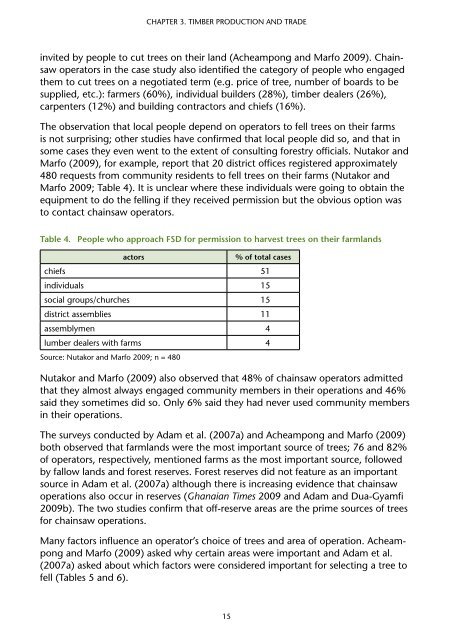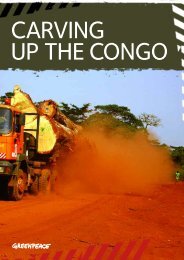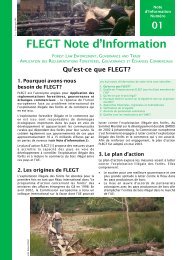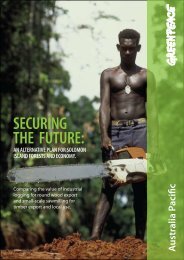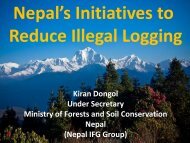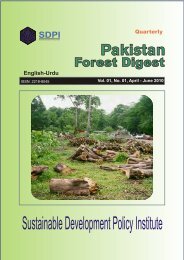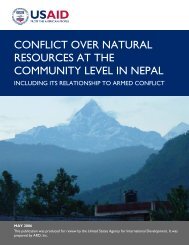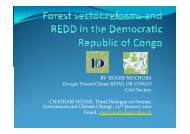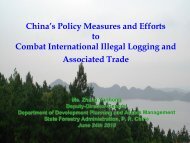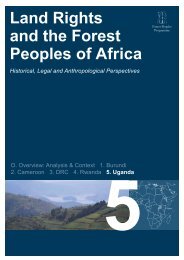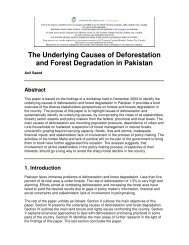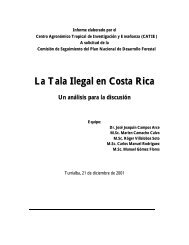CHAINSAW MILLING IN GHANA: CONTExT, DRIVERS ... - Fornis.net
CHAINSAW MILLING IN GHANA: CONTExT, DRIVERS ... - Fornis.net
CHAINSAW MILLING IN GHANA: CONTExT, DRIVERS ... - Fornis.net
- No tags were found...
You also want an ePaper? Increase the reach of your titles
YUMPU automatically turns print PDFs into web optimized ePapers that Google loves.
Chapter 3. Timber production and tradeinvited by people to cut trees on their land (Acheampong and Marfo 2009). Chainsawoperators in the case study also identified the category of people who engagedthem to cut trees on a negotiated term (e.g. price of tree, number of boards to besupplied, etc.): farmers (60%), individual builders (28%), timber dealers (26%),carpenters (12%) and building contractors and chiefs (16%).The observation that local people depend on operators to fell trees on their farmsis not surprising; other studies have confirmed that local people did so, and that insome cases they even went to the extent of consulting forestry officials. Nutakor andMarfo (2009), for example, report that 20 district offices registered approximately480 requests from community residents to fell trees on their farms (Nutakor andMarfo 2009; Table 4). It is unclear where these individuals were going to obtain theequipment to do the felling if they received permission but the obvious option wasto contact chainsaw operators.Table 4. People who approach FSD for permission to harvest trees on their farmlandsactors% of total caseschiefs 51individuals 15social groups/churches 15district assemblies 11assemblymen 4lumber dealers with farms 4Source: Nutakor and Marfo 2009; n = 480Nutakor and Marfo (2009) also observed that 48% of chainsaw operators admittedthat they almost always engaged community members in their operations and 46%said they sometimes did so. Only 6% said they had never used community membersin their operations.The surveys conducted by Adam et al. (2007a) and Acheampong and Marfo (2009)both observed that farmlands were the most important source of trees; 76 and 82%of operators, respectively, mentioned farms as the most important source, followedby fallow lands and forest reserves. Forest reserves did not feature as an importantsource in Adam et al. (2007a) although there is increasing evidence that chainsawoperations also occur in reserves (Ghanaian Times 2009 and Adam and Dua-Gyamfi2009b). The two studies confirm that off-reserve areas are the prime sources of treesfor chainsaw operations.Many factors influence an operator’s choice of trees and area of operation. Acheampongand Marfo (2009) asked why certain areas were important and Adam et al.(2007a) asked about which factors were considered important for selecting a tree tofell (Tables 5 and 6).15


